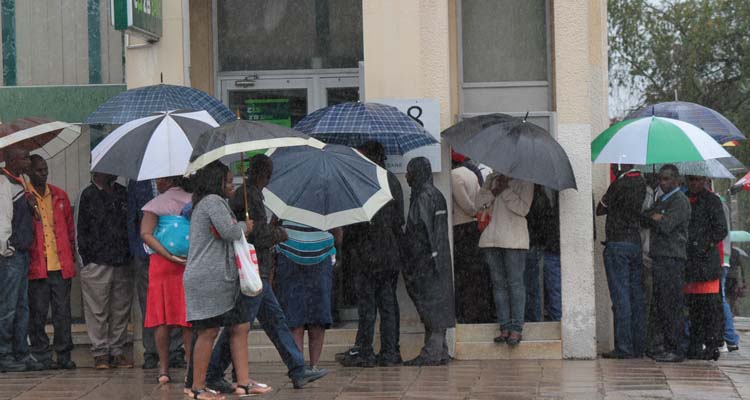
The ManicaPost

Kudzanai Gerede Business Correspondent
The cash crisis that choking the country has divided opinion on what stance Government should take in order to subvert the challenge, with the debate taking centre stage in a recent Parliamentary post-budget workshop held last week on Monday in Harare.
There is general consensus that a US dollar denominated economy is not sustainable anymore despite it having brought economic stabilisation from hyper inflation since its introduction in 2009. Since it’s an international trading currency, the US dollar has been excessively externalised over the past few years leading to the current cash shortages being experienced.
The Reserve Bank of Zimbabwe (RBZ) came up with possible interventions to liquefy the economy albeit with somewhat limited success by introducing a surrogate bond note currency backed by a US$ 200 million facility from the Afreximbank which was drip-fed into the market as an incentive to exporters. The US$ 200 million has since been depleted yet the cash shortages continue to haunt the market, triggering the Central Bank to set an additional US$ 300 million worth of bond notes.
The push for electronic money usage in the form of mobile money transfers and plastic cards has so far yielded positive results with about 70 percent of total transactions in the formal sector done electronically. But for this highly informal economy, demand for hard cash is overwhelming, and its scarcity has necessitated a blossoming black market, selling cash at high premiums hence devaluing the bond notes.
Whereas the official rate between the US dollar and the bond note is at par, as at early this week, the bond was being traded at US$ 1 to 1,30. Suffice from the exchange rate distortions, the negative effects of a strong currency are well documented in the production sectors particularly that of manufacturing, that has been rendered uncompetitive due to high production costs. This implies that locally produced goods cannot enter the export market as they are very expensive.
Addressing Parliamentarians and Senators at the 2018 post budget Parliamentary workshop, Speaker of Parliament Advocate Jacob Mudenda stressed the need for the country to now focus on having its own gold backed currency leveraging on small scale miners’ production capacity in order to address some of the structural imbalances emanating from the use of the US dollar pegged currency.
“If Parliament advocated for US$ 100 million for the purchases of 200 complete milling plants for at least 2 000 small scale miners, the artisanal miners can produce 100 tonnes of gold annually whose value can be US$ 4,2 billion,”
“Combine this level of production with that of primary producers, Zimbabwe can realise at least 150 tonnes of gold yearly. It is possible to establish our gold bank and introduce our own national currency,” said Advocate Mudenda.
Currently, the country is producing 24 tonnes annually with small scale miners producing 10,3 tonnes as at 31 October last year, despite using hand tools with minimal technologies. In his presentation at the same event, economic analyst Dr Gift Mugano concurred with the need for a currency shift in the medium term with priority focused on production in order to increase foreign currency reserves at the Central Bank.
“We need to have our production levels efficient and increased so that we drive our exports high then pile our hard US dollar currency stocks at the Reserve Bank before we introduce a national currency. This is different from having a US$ 200 million facility stocked somewhere at Afreximbank and print your bond notes then say they are at par with the US dollar.
“By generating real US dollars and have them stocked in the Central Bank it will bring confident in our currency. If we don’t do that and we introduce a local currency now, it will definitely crumble tomorrow morning,” said Dr Mugano.
There are however, suggestions for the adoption of the South African Rand which is generally viewed as stable and less firm as compared to the US dollar. Financial and economic expert Professor Ashok Chakravarti said not only is the Rand stable and less firmer but it also puts the country at a better competitive position with its biggest trading partner South Africa who have been riding on producing her goods at a lower cost than Zimbabwe.
“I have been advocating for the Rand for the past seven years. With a less firm currency such as the Rand we wouldn’t have got to where we are, externalization of funds to anywhere in the world. The Rand is a regional currency and its proximity as our biggest trading partner will improve our competitiveness and cut our trade deficits,” he said.
However, some analysts like Dr Mugano are of the view that the Rand will still yield the same results as the US dollar given the country’s production inefficiency.
“Highly industrialized South Africa will relish competing with Zimbabwe using the same currency because South Africa will still produce more cost efficient that Zimbabwe’s archaic industries so we will still have problems with imports from our biggest trading partner. A less firm currency than the Rand is better,” he said.



